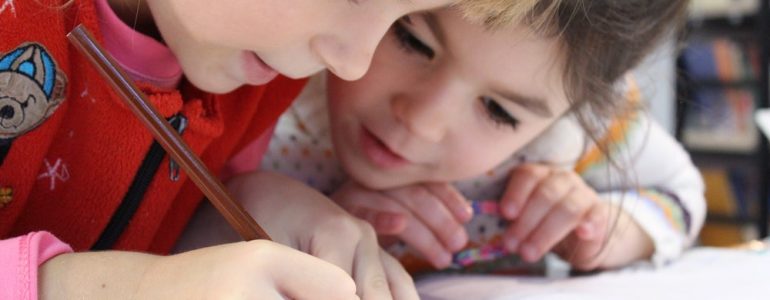Whether it’s because they are falling behind in school or you want to give them a head start, teaching math to your child should be easy and fun. But you’ll have to take a different tack from that of his math teacher.
Rather than formal sit-down lessons it’s more effective to incorporate learning into the day-to-day activities. This is especially so for younger children. For older kids you can try the traditional class approach for certain topics.
But always keep it fun. The worst thing you can do is make them think that maths is hard or they are not good at it. Make sure that even if they are slow-learners they are still motivated to keep learning new concepts.
Here are a few tools and strategies that can help.
1. Start with number recognition and counting
For younger children who are in preschool, the most important first step is to confidently recognise numbers and learn how to count.
Start from 1-10. Once they can recognise these and count to 10, the rest will be much easier. There are several ways to help them recognise numbers.
Buy a number chart and hang it on the wall so that they can keep seeing the numbers. Count stuff in the house like fruits, fingers and spoons together. As you go about your activities point out numbers in real life such as on a bus, on the TV, on a car or on a package.
Get an abacus too. It’s great for basic counting as well as more advanced lessons in addition, subtraction, multiplication and division.
Educational cartoons and kids songs also help a lot. Look for those that incorporate number counting. There are plenty of fun numbers and counting videos on YouTube they can watch even when you are travelling.
2. Use Numicon
Once your kid has a strong grasp on the basics of number recognition and counting (up to 20 or more) it’s time to introduce other concepts such as simple addition and subtraction.
Here, you need to rely even more on play-based learning. One of the best tools for this is Numicon. These are kits that provide a fun approach to learning maths both for younger and older learners.
For kids who are just moving from number recognition and counting, try this 1-10 Numicon kit that teaches basic addition and subtraction using colourful shapes.
For older kids in primary school, you can use this Numicon box of 80 shapes to teach multiplication, algebra, symmetry and advanced addition & subtraction.
There are also Numicon number lines, dices and books you can use to explore and teach different math concepts.
3. Emphasises on real life uses of math
One of the things that frustrate children struggling with maths is the perception that it is useless outside of the classroom. Obviously it’s not. But they don’t know that.
So as you learn together with them, show them how math is important in real life. For younger children, one simple way of doing this is cooking.
Ask them to use a recipe to help you count the number of eggs, cups of something or spoons of something you need.
For older kids who have learnt number recognition and can do some addition and subtraction, go grocery shopping with them. Ask them to help you compare prices, calculate discounts and count out how much you need to pay.
As they see more of math and numbers in real life, they’ll begin to appreciate its importance.
4. Play math games
Another way to make learning math fun is to play games and use best math toys. This works for both younger and older kids. Just vary the complexity of the game depending on their age and learning level.
You can use board games or look up games online or in app stores. Alternatively, come up with your own creative game.
You can play pretend shopkeeper and customer. You can have a math scavenger hunt or give them a math puzzle with a reward if they solve it.
Depending on what your child loves you can also use music or stories to teach maths. It’s all about making it fun.
5. Buy activity books
Activity books are great for teaching kidscto recognise and write numbers. Look for one with creative fun activities that you can do together or leave them to do alone.









